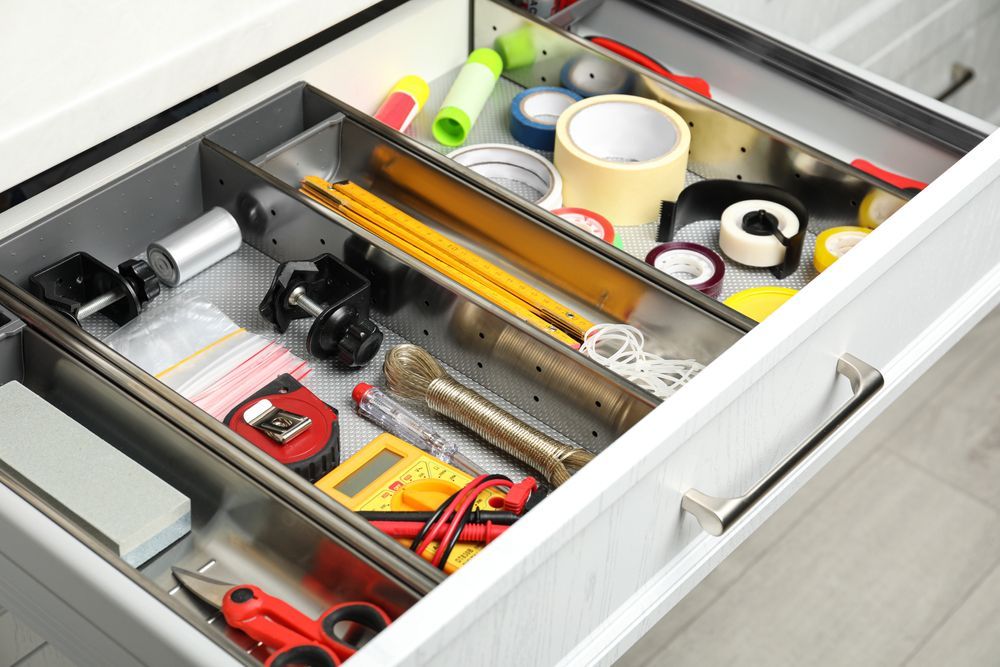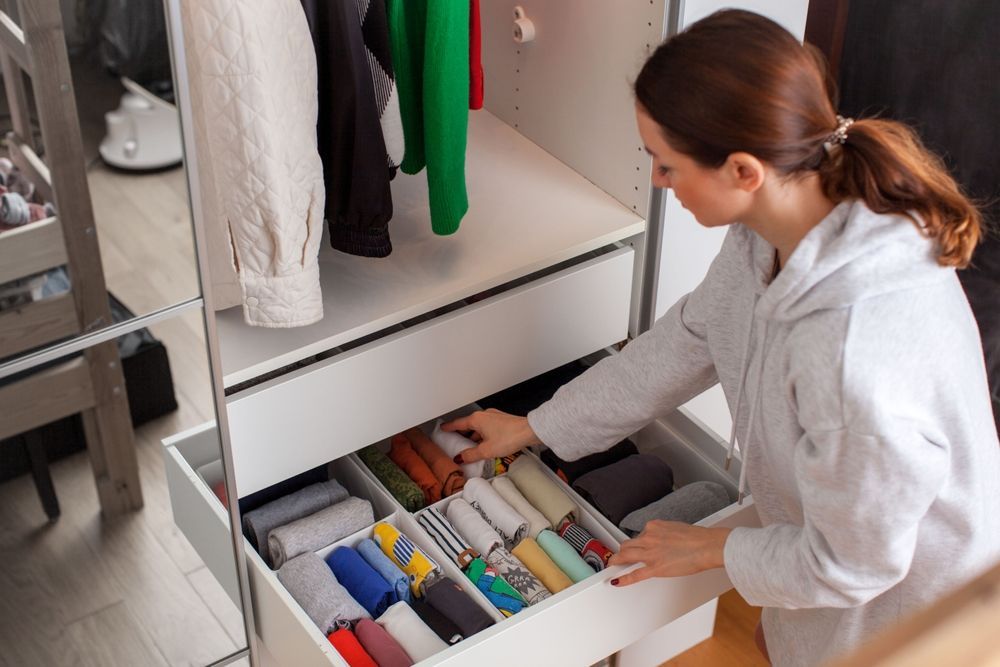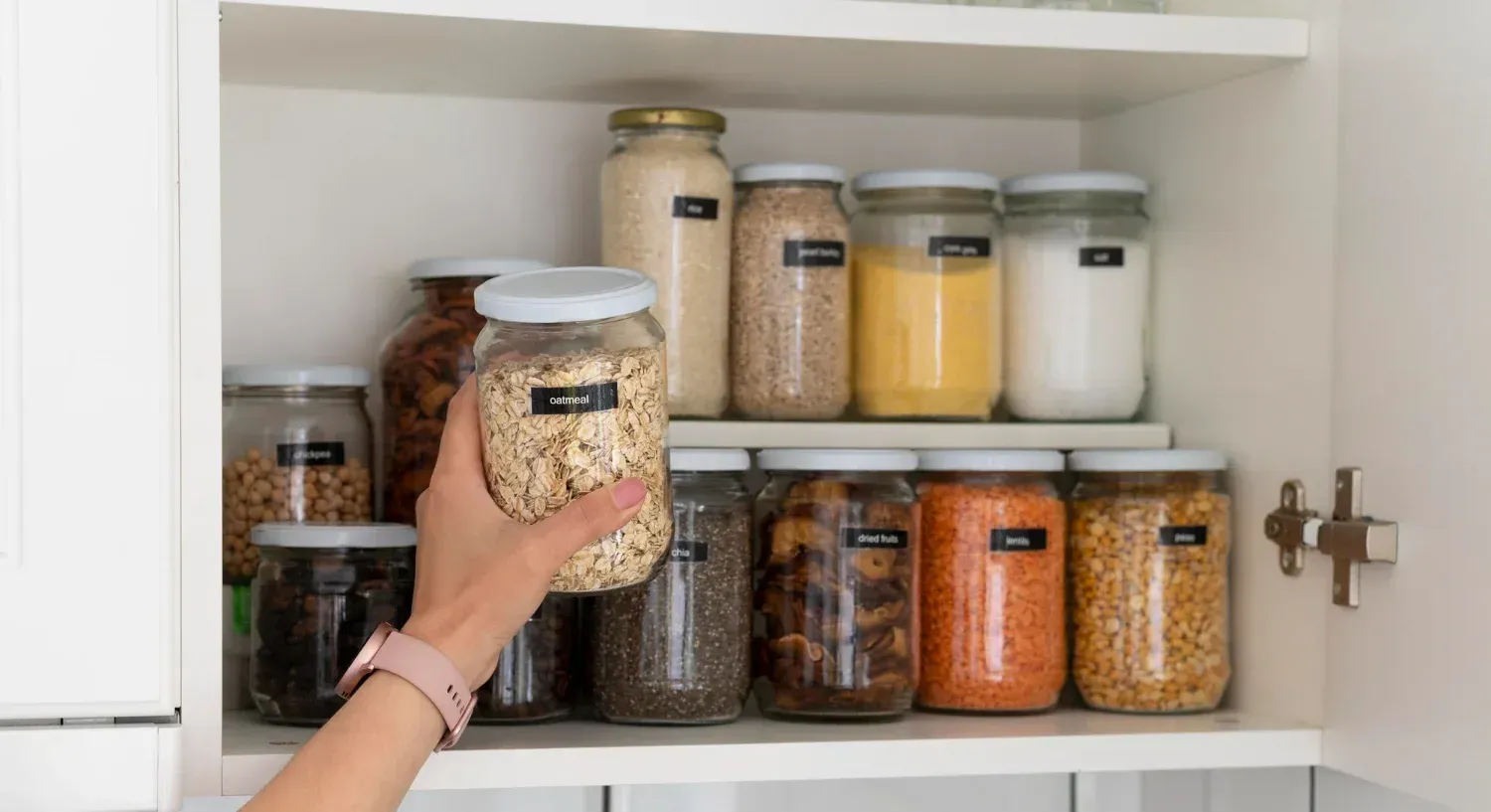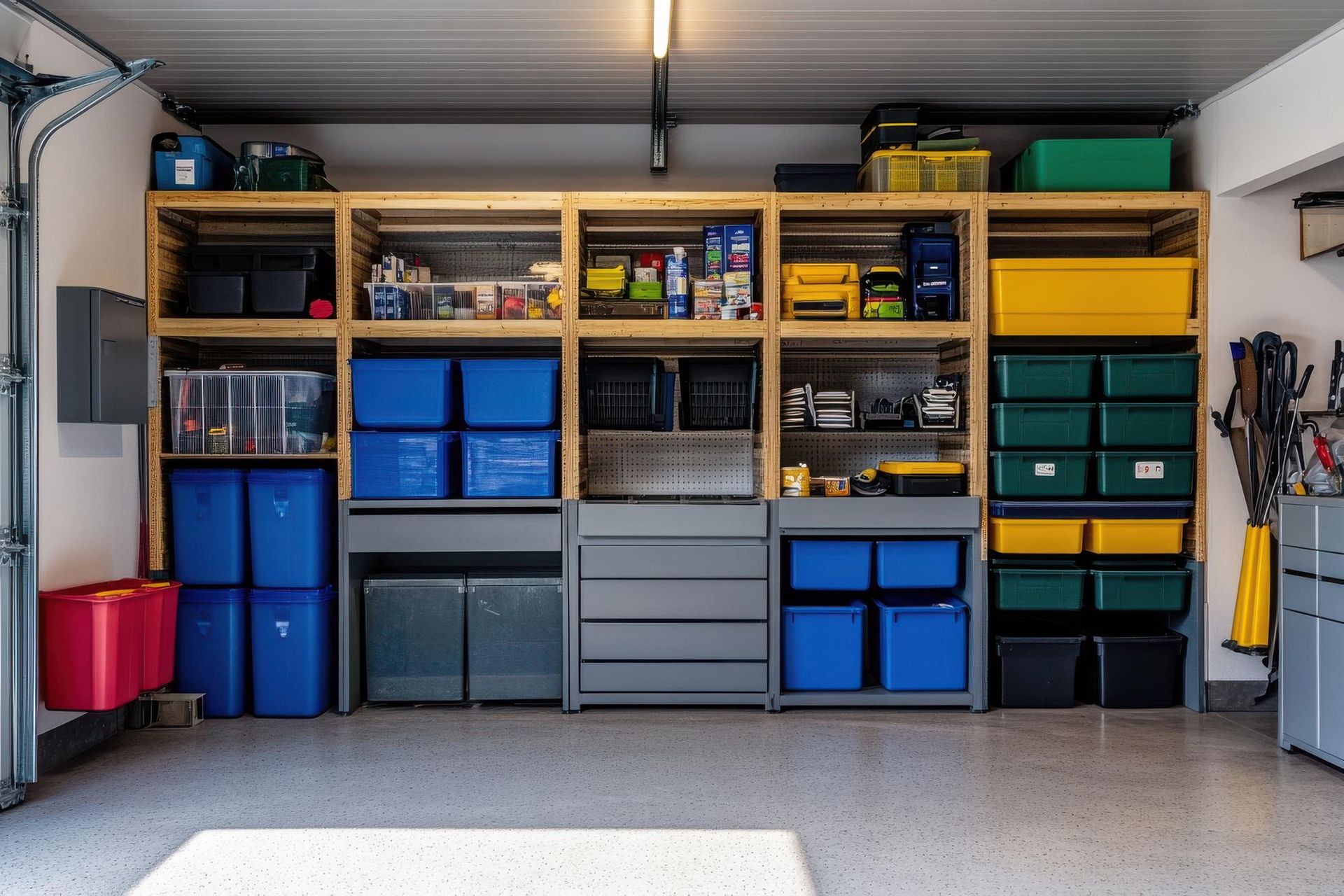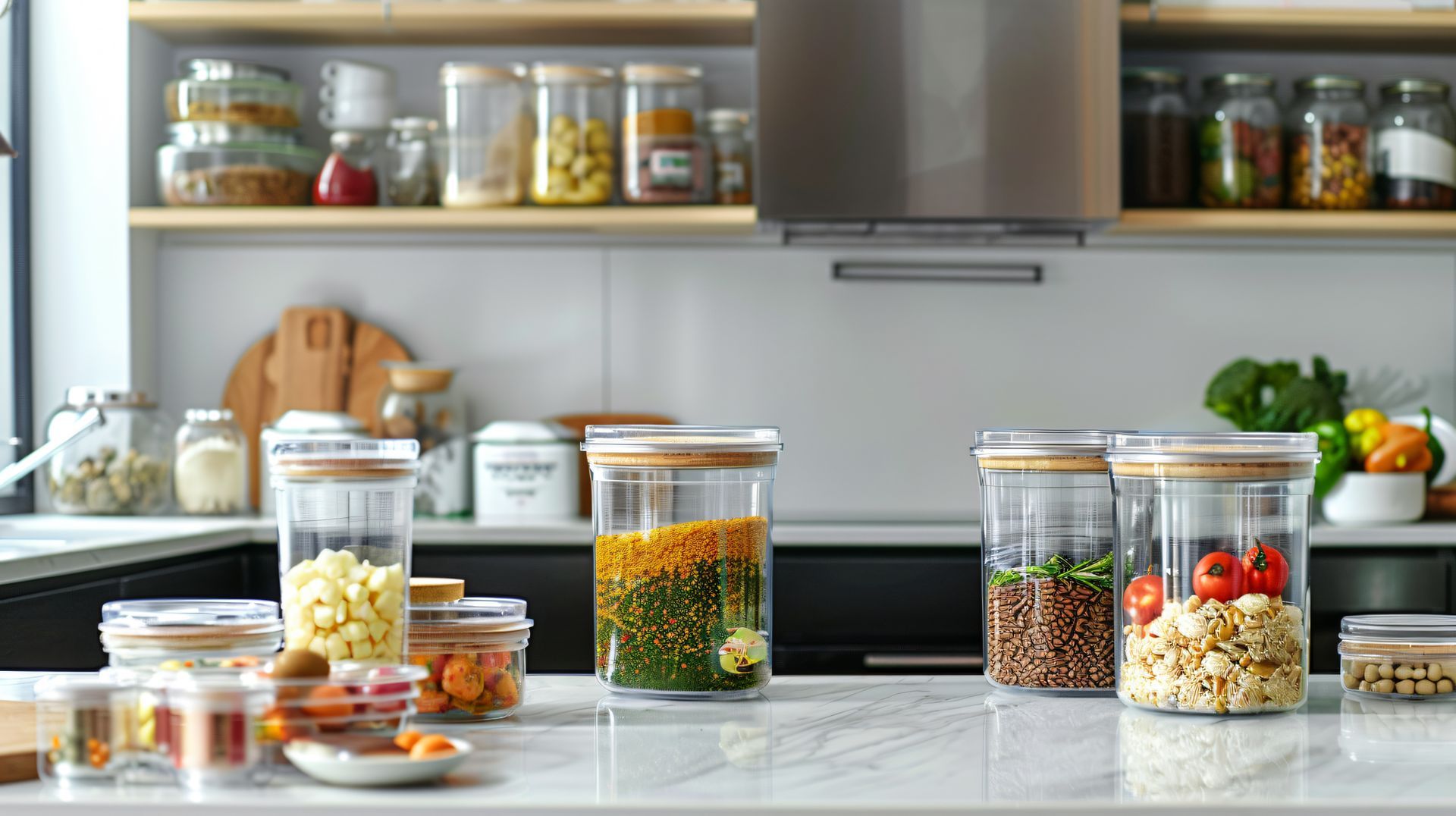How to Organize Your Kitchen - Complete Guide
A tidy kitchen means every day is easy. When everything has its own space, you save time, cut down on stress, and actually enjoy cooking. If you are trying to figure out how to organize a kitchen without feeling overwhelmed, you are in the right spot.
This guide walks you through practical, beginner-friendly steps for working in any space, from a small apartment to a large family kitchen.
If you ever thought, have you spent 10 minutes looking for a spatula? You are definitely not alone. A few smart changes can make your kitchen calmer and more efficient. And if you ever want hands-on help, a
professional organizer can make the process even smoother.
We are also sharing a simple kitchen organization idea you can start using today. Let’s get the speed working for you, not against you.
Why Does Kitchen Organization Matter?
A well-organized kitchen makes your whole day run smoothly. When your drawers, shelves, and pantry are set up with care, you spend less time hunting for ingredients and more time cooking. It also reduced food waste.
Most people have found a jar of spices hiding in the back of the pantry, long expired, simply because things were stuffed out of sight.
Good organization makes meal prep faster, which helps you see what you already have and keep everything. It is beneficial for busy families trying to get dinner on the table, pet owners who need safe storage, and anyone working with a small kitchen that can't afford clutter.
Think of this as a simple part of
home decluttering. A few thoughtful changes can turn your kitchen into a space that supports your routine instead of slowing you down.
Organize Your Kitchen: Step-by-Step Guide
Step 1: Declutter Your Kitchen
Before starting the organization process, declutter. Clear surroundings make work easier. Start with emptying cabinets, drawers, and pantries.
Divide items into three categories: retain, donate, or discard. Keep only the tools you use weekly, like your favorite spatula or cutting board. Get rid of broken pots.
Give out copies. Do you really need three can openers? A
decluttering checklist
can help: ask, When did I last use this? In case it takes more than a year, refer to relinquishment.
To clear space and prepare for success, this action was taken. To avoid becoming overwhelmed, take them one at a time.
Step 2: Group and Categorize Items
At this point, sort the items by functions. Think of baking tools, cooking tools, or snacks. Create separate areas for preparation, cooking, and storage to maintain order.
Keep knives and cutting boards close to the prep area. A cooking pot should be near the stove. Pantries have the advantage of bringing together different canned goods, grains, and snacks.
For families, one can place kid-friendly items, such as plastic cups, on low shelves that are easily accessible.
Pet owners provide a place to store pet food so it doesn't spill. This is done to ensure that everything has its purpose and place, making your kitchen user-friendly.
Step 3: Select the Right Storage Solutions
Storage solutions bring order to chaos. Bins, shelving, and drawer dividers are alternatives with different pros. Clear containers are stackable and visually recognizable as perfect for pantry basics. Baskets look stylish but may not last as long. Drawer inserts keep utensils clean. Consider the following factors:
Longevity: Metal or glass bins are longer-lasting than plastic.- Moisture resistance: Do not place wood close to sinks; plastic or metal handles are more resistant to moisture.
- High-quality look: Glass jars have a smoother appearance than plastic.
Kitchen cabinet organization has the advantage of being stacked with doubled storage space. Affordable plastic bins are cost-effective to the renters. Choose the solutions that suit your requirements.
Room-by-Room Kitchen Organization Ideas
Pantry Organization
Meal planning is made simpler with a well-organized pantry. In small kitchens, use tiered shelves so that you can see everything on one shelf. Stackable bins or mason jars can help keep grains and snacks fresh longer.
Label boxes to enable ease of access to children like transparent bins of their favorite snacks. Store items together in a larger pantry. Store together by category, like breakfast, baking, etc.
Small pantry storage uses the vertical space: add racks on the door to store spices or packets. Plastic bins are also economical but glass jars add a stylish effect. Place frequently used items at eye level.
Refrigerator Organization
An
organized refrigerator leads to less food waste and saves time. Sort by type: put dairy on one shelf, produce in drawers, and condiments on the door. Keep two clean refrigerator bins: one for leftovers and another for drinks.
A lazy Susan makes access to the back. Purchase and store the produce in deep containers to prolong its shelf life and reduce moisture levels.
Keeping the refrigerator organized makes it easy to see what's inside, preventing waste. Place frequently used items, such as milk, in convenient locations.
Countertops and Drawers
White countertops bring out a peaceful kitchen. Only items you use daily, such as a coffee maker or cutting board, should be kept on the surface; everything else can be stored.
For drawers, use dividers to organize utensils, such as placing spoons in one compartment and forks in another. The order of the junk drawer helps keep things tidy: the trays holding batteries or clips are small and kept clean.
Keep knives in a drawer insert, especially when children are around, for safety. The kitchen is made larger and cleaner by the existing counters, and the organized drawers prevent rummaging.
Under-Sink and Cabinet Storage
Under-sinks may be very difficult to access, but they are available via pull-out racks. To prevent leaks, store cleaning products sold in stores in bins.
The capacity of plates or pans can be increased by using stackable shelves in cabinets. To preserve freshness and prevent bugs, pet owners should store pet food in airtight containers.
Avoid overfilling cabinets; make sure there is enough room for easy access. With these solutions and necessities close at hand, even in confined areas, space is optimized. Use plastic or metal organizers that don't get wet in moist environments.
Wrapping Up
Organizing your kitchen shouldn't be this hard. The first step is decluttering, followed by organizing things by purpose, then selecting clever storage options, and, last but not least, selecting innovative storage options for each area, including the pantry, refrigerator, counters, and cabinets.
These actions result in a space that is both comfortable and efficient. Having a clean, clutter-free kitchen enhances the quality of life, whether you are cooking a meal in a small flat or caring for a family.
Begin with a bit of space, such as a single drawer, and enjoy the thrill.
You will be happy with the peace and productivity that a well-organized kitchen brings to your daily life. You can do it during this spring cleaning season.
FAQs
How do I start to organize a kitchen if I'm overwhelmed?
Start small tackle one drawer or shelf at a time. Learning how to organize a kitchen feels easier with a decluttering checklist. Sort items, keep essentials, and donate extras to stay focused.
What's the best way to store spices?
Use a spice rack or drawer insert. Label tops for quick finds. Similar to linen closet storage, keep spices in uniform containers for a tidy look.
How can I make my kitchen kid-friendly?
Store safe items, such as plastic cups or snacks, on low shelves. Clear bins make it easy for kids to grab what they need.
What storage solutions are best for small kitchens?
Stackable bins, wall hooks, and magnetic strips maximize space. Vertical storage keeps counters clear and functional.
How often should I reorganize my kitchen?
Reassess every 6 - 12 months. Declutter before holidays or moves to keep things fresh.



